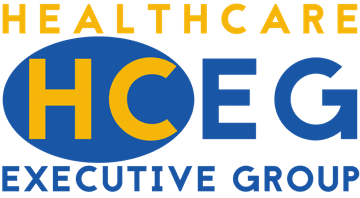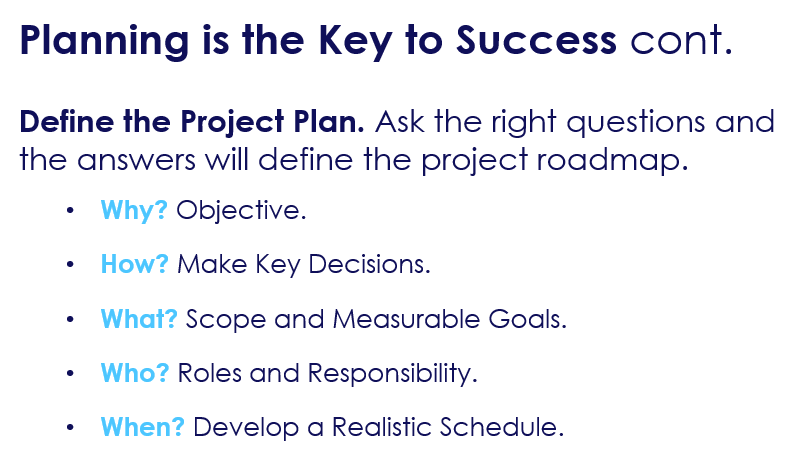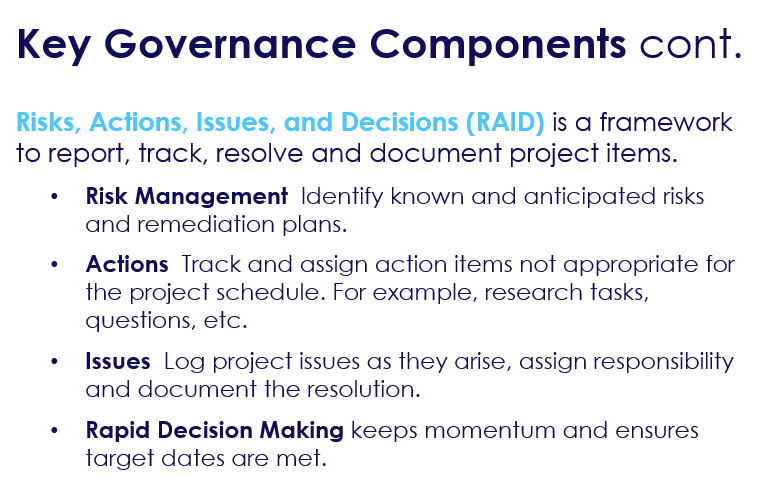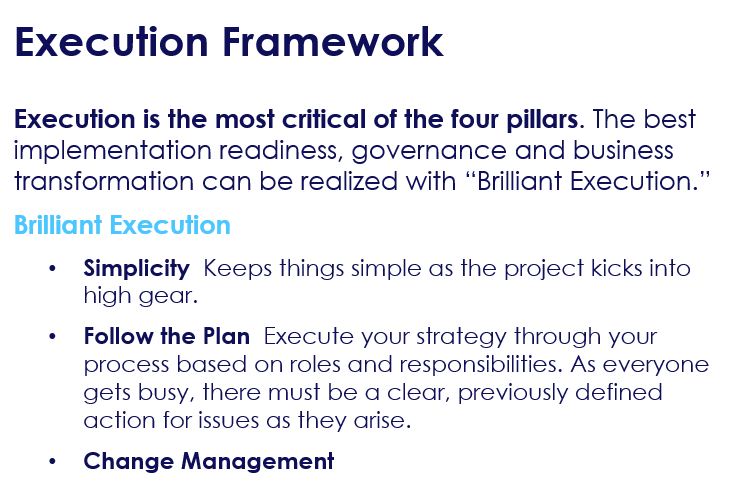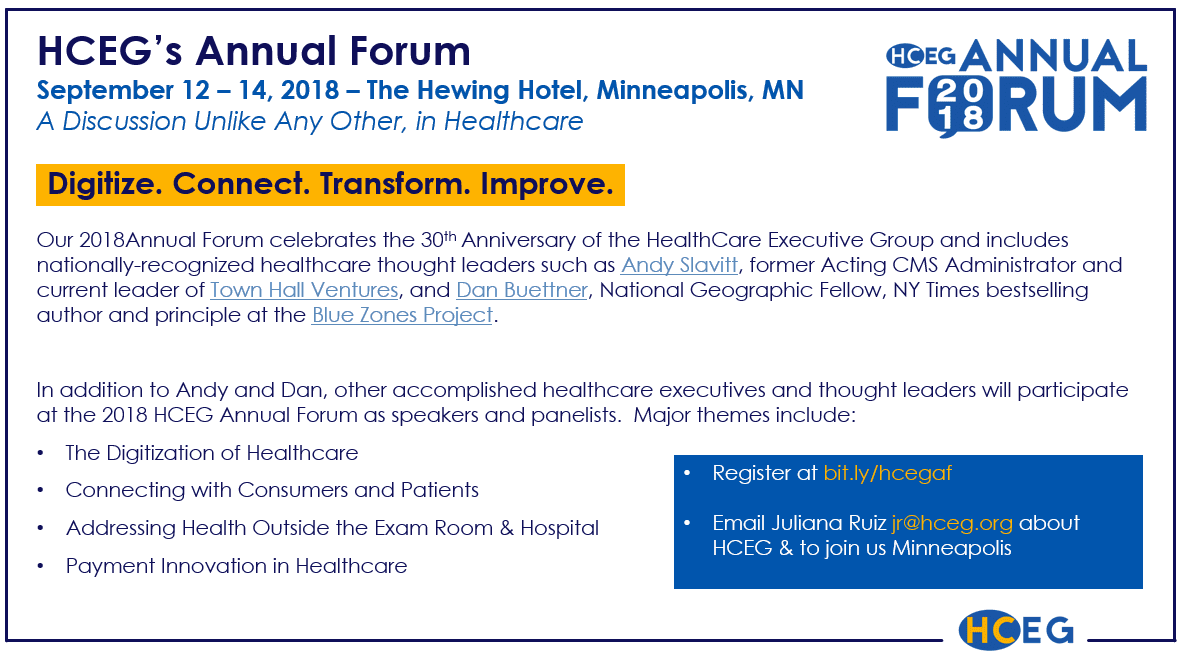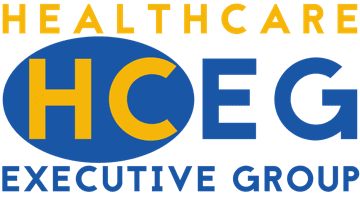
Completing a successful core-system replacement project at a health plan or health system organization is a major undertaking. And successfully delivering a multi-million dollar digital transformation project is significantly enhanced by establishing a framework based on proven principles.
Framework for Successful Core-System Replacement Project
Last week, our sponsor partner Change Healthcare shared valuable insight in a webinar titled ‘The Four Pillars of a Successful Core-System Replacement Project.’ Jeanne Noe PMP, Director of Consulting Services and Mauricio ‘MJ’ Jimenez, Sr Manager of Consulting Services at Change Healthcare, shared information, insight and practical ideas on how to establish a framework for successful core-system implementation. This framework for a successful core-system replacement project is based on four pillars: 1-Implementation Readiness, 2-Governance, 3-Business Transformation and 4-Execution Framework.
This blog post recaps highlights and detailed content from the ‘Core-System Replacement Project’ webinar presented by Change Healthcare on August 2nd, 2018. Included is a recording of the webinar, the presentation slide deck, and additional information on establishing a framework for successful core system implementation. You can also check out this Twitter Moment summarizing live Tweets shared during the webinar.
Information, Insight & Actionable Ideas for Successful Core-System Implementation
After introductions by HCEG Executive Director Ferris Taylor, Jeanne Noe kicked off the webinar by sharing that the most important indicator of success in a Core-System Replacement project is a strong project foundation. Jeanne emphasized the importance of building a foundation on the Four Pillars of Success before the project progresses – not as you go along.
Why, How, What, Who & When of a Successful Core-System Replacement Project
The presentation from Change Healthcare was packed with information, actionable ideas and insight collected over the course of performing dozens of core-systems replacement projects for major healthcare payers and other risk-bearing entities.
Starting with the Taxonomy of Why, the importance of clearly defining – and widely sharing – the Strategic Vision, Business Goals, and Objectives were shared. Jeanne noted that explaining why a legacy system is being replaced is a key way to help all project team members achieve project objectives. Yet few healthcare organizations widely communicate the reasons for major initiatives like a core-system replacement project.
Jeanne went on to provide more details and commentary on the How, What, Who & When of a core-system replacement project. Since there’s simply too much information to share about the how, what, who and when in this recap, see the slides listed in the presentation deck for more. Better yet, watch the recording of The Four Pillars of a Successful Core-System Replacement Project here.
Roles Matters – Clearly Defined & Accountable
One of the most valuable bits of insight shared by Change Healthcare’s Jeanne Noe was that too many healthcare organizations make the very common mistake of not clearly defining roles, responsibilities and decision-making authority. Before the project starts – and periodically throughout the projects as objectives change and project resources come and go.
Clearly defining roles, responsibilities and decision-making authority seems obvious but is simply often not addressed.
Key Governance Components of a Successful Core-System Replacement Project
Change Healthcare presented two important actions healthcare executives sponsoring core-systems replacement projects MUST address at the start:
- Establish a single point of accountability and expertise
- Clearly identify decision makers and specialists for issue resolution
Risks, Actions, Issues, and Decisions – It’s a RAID!
Somewhat similar to the widely known RACI (Responsible-Accountable-Consulted-Informed) approach for managing large projects like core-systems replacement projects, Change Healthcare’s Core-System Implementation Framework uses the RAID framework to report, track, resolve and document project items.
As opposed to the somewhat passive activities defined via the popular RACI approach, Change Healthcare’s RAID approach to governing major projects emphasizes the importance of actions and rapid decision making within a framework of issue identification and risk management.
Business Transformation & Core-Systems Replacement Projects
Mauricio ‘MJ’ Jimenez, Sr Manager of Consulting Services at Change Healthcare continued the second half of the webinar by sharing information, insight, ideas, and tips on the 3rd and 4th Pillars of a Successful Core-System Replacement Project: Business Transformation and Execution Framework.
Business Transformation
MJ emphasized that replacing your core-system is a business transformation, not an IT project or initiative. MJ offered the following as some key considerations to effect a true business transformation:
- Assign senior resources to serve as ambassador to the rest of the organization.
- Neglecting employees affected by the transformation will guarantee resistance to change.
- Relevant content is key and its delivery is enabled through Role-Based Training
- When meetings grow in number of participants, it is often a reflection of poor communication.
Execution Framework – The Most Critical of the Four Pillars
Core-system and other major projects undertaken by healthcare organizations will be for naught without a well-designed Execution Framework. Change Healthcare’s MJ Jimenez shared some key experiences, insights, and ideas on how to establish an effective Execution Framework. And offered ideas for executing brilliantly.
The key components of the Execution Framework described include the following:
- Flexibility
- Maintains Focus
- People First
- Requirements Management
- Defect Management
- Systems Integration Plan
Summarizing the Webinar
Jeanne Noe shared the following slide at the end of the webinar.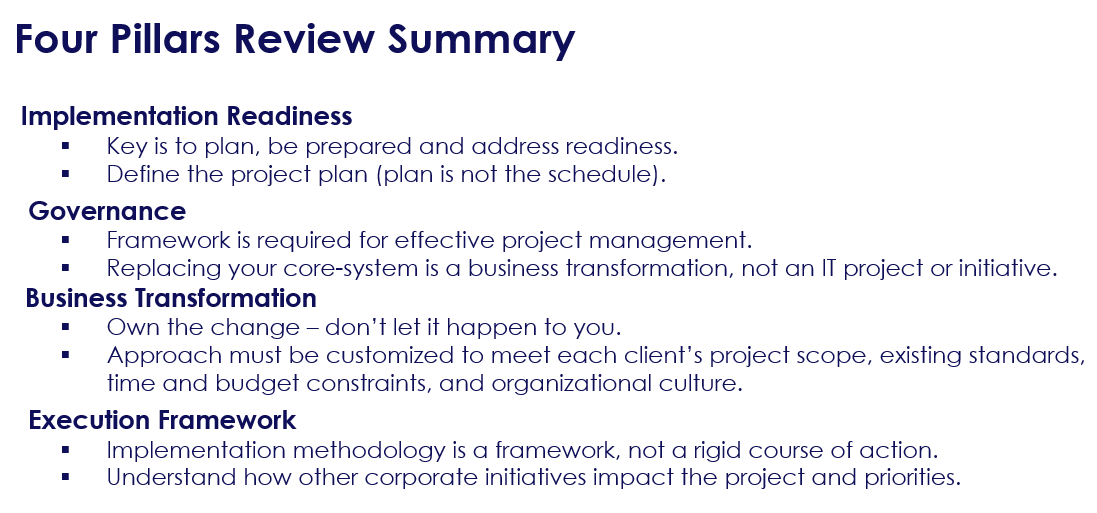
More Insight & Opportunity for HealthCare Executives
The information shared by the HealthCare Executive Group in its Webinar Series events are one example of services we’re pleased to offer our members and associates. In addition to connecting with us on Twitter, Facebook, LinkedIn and subscribing to our eNewsletter, consider joining other healthcare executives and industry thought leaders at the HealthCare Executive Group’s 2018 Annual Forum on September 12-14th, 2018 in Minneapolis, MN. We’ll be celebrating our 30th Anniversary helping healthcare leaders navigate the strategic and tactical issues facing their organizations.
Check out this page for more information on our 2018 Annual Forum.
